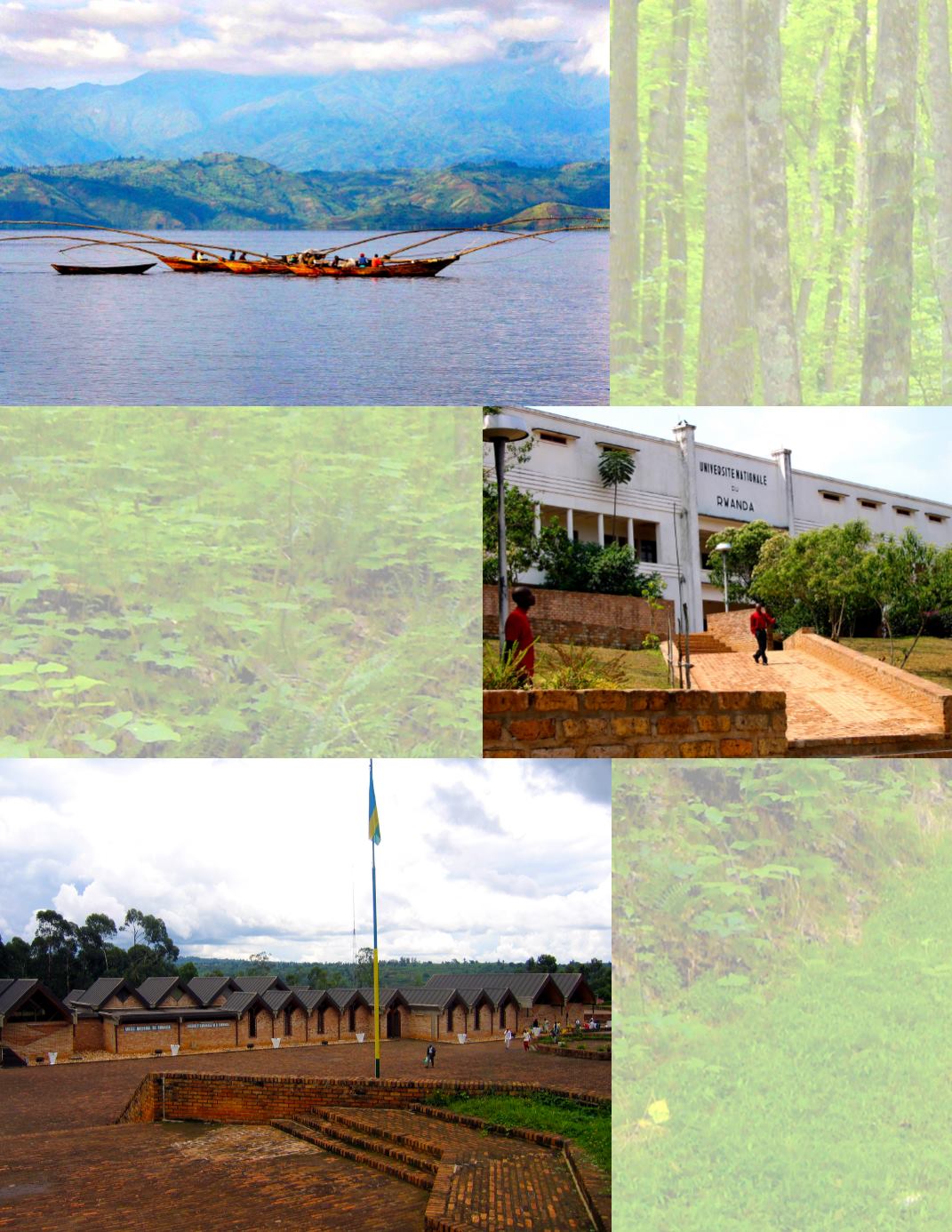

Lake Kivu
Part of the Great Rift Valley, Lake Kivu
is the border between Rwanda & DR
Congo. A great relaxing region where
tourists are safe to visit and swim (ask
locals where) and it’s also extremely
picturesque. Make sure that you try
to visit cities like Kibuye and Gisenye
near the DR Congo border.
Butare (Huye)
The intellectual capital of the country,
Butare is home to Rwanda’s National
University. The most prominent tourist
attraction here is the National Muse-
um, which houses perhaps the finest
ethnographic collection in East Africa
and this museum
will show the great
history of Rwanda
and also its
entrance into the
modern world. Ab-
sorbing displays of
traditional artefacts
are illuminated
by a selection of
turn-of-the-century
monochrome pho-
tographs, providing
insight not only
into pre-colonial
lifestyles, but also
into the subse-
quent development
of Rwanda as a modern African state.
Butare also boasts craft shops and a
botanical garden.
This is the cultural hub for the country
and was once the most important city
before 1965. Visit the nearby Nya-
bisindu (Nayanza) where you can find
the impressive royal palace of Rwan-
da’s feudal monarchy.
Chimpanzee and Colobus mon-
key trek
Nyungwe forest national park is one
of the largest remaining high-altitude
rainforests in Africa and is home to the
world’s largest troop of colobus mon-
keys, which have a distinctive black
and white coloring. A trek to spot them
could have you surrounded by literally
hundreds of them.
You will be warned that you might
not see the chimps first time around,
although the trackers are pretty good
and know which trees they feed on.
You are most likely to catch them
perched in a ficus tree and might spot
Mona monkeys too.
Dian Fossey’s grave, Volcanoes
National Park
The American researcher Dian Fossey
set up a Research Centre high in the
Virunga volcanic mountains midway
between Karisimbi and Bisoke, nam-
ing it the Karisoke Research Centre.
Now all that remains are some founda-
tion stones and signs detailing what
was there. She is buried there next to














